Best places in Visakhapatnam for Trips: Welcome to Visakhapatnam, fondly called Vizag, a vibrant coastal city in Andhra Pradesh that seamlessly blends natural beauty, culture, historical past, and modern appeal. Visakhapatnam has something for everyone, whether you are a visitor in search of serene seashores, a records buff exploring ancient websites, or a foodie craving nearby delicacies. In this search engine marketing-optimized blog, we’ll take you on a journey via the pinnacle attractions, hidden gemstones, and sensible tips to make your visit to Vizag unforgettable.
Why Visit Visakhapatnam in 2025?
Vizag, known as the “Jewel of the East Coast,” combines serene landscapes, vibrant culture, and modern attractions. The high-quality time to go to is October to March, while the climate is first-class, perfect for seaside outings and sightseeing. From tranquil beaches to ancient caves, here’s a curated listing of the top places in Visakhapatnam to leave you spellbound.
Most visiting Places in Visakhapatnam:
- Simhachalam Temple
- Borra Caves
- Rama Krishna (RK) Beach
- Indira Gandhi Zoological Park
- Araku Valley
- Kailasagiri Hill Park
Simhachalam Temple: Top places in Visakhapatnam

Simhachalam Temple, one of the best places in Visakhapatnam, Andhra Pradesh, is a revered Hindu temple committed to Lord Narasimha, an incarnation of Lord Vishnu. Perched atop Simhachalam Hill, about 300 meters above sea degree, the temple offers a blend of religious importance and scenic beauty, attracting devotees and travellers alike.
Historical and Cultural Significance
The temple, believed to have been set up in the 11th century, showcases a wealthy mixture of Kalinga and Dravidian architectural styles. Its records are tied to legends, with one famous story mentioning that Lord Narasimha appeared here to shield his devotee, Prahlada, from his demon father, Hiranyakashipu. The deity, Sri Varaha Lakshmi Narasimha Swamy, is uniquely worshipped in a form included with sandalwood paste for 12 months, at some point during the annual Chandanotsavam pageant, while the authentic idol is revealed.
Inscriptions dating back to the 9th century located on the temple imply its historic prominence underneath the patronage of various dynasties, including the Cholas and Eastern Gangas. The temple remains a good-sized pilgrimage website online, drawing hundreds at some stage in galas like Akshaya Tritiya and Narasimha Jayanti.
Architecture
The temple’s structure is visible, presenting intricately carved gopurams (towers), mandapams (halls), and a sanctum sanctorum that homes the deity. The predominant gopuram, adorned with unique sculptures, reflects the artistry of the technology. The temple complex additionally consists of shrines committed to other deities like Lord Shiva and Goddess Lakshmi. The hilltop vicinity gives panoramic views of Visakhapatnam’s coastline and luxurious greenery.
Borra Caves: places in Visakhapatnam

Location and Overview:
Borra Caves, called Borra Guhalu, are positioned within the Ananthagiri Hills of the Araku Valley, approximately 90 km from Visakhapatnam, Andhra Pradesh, India. Situated at an elevation of roughly 705 meters (2,313 toes) above sea stage, those limestone caves are amongst India’s most important and private, extending to a depth of 80 meters and sprawling over 2 square kilometres.
Formation and History:
Formed over millions of years (anticipated to be a hundred and fifty million years old), the caves are karstic limestone structures created by the erosive motion of the Gosthani River on limestone deposits. The river’s flow dissolved calcium carbonate, central to the formation of astonishing stalactites (putting from the ceiling) and stalagmites (rising from the floor). These formations have taken specific shapes, reminiscent of figures like Shiva-Parvathi, Rishi’s Beard, Mother-Child, Crocodile, Human Brain, Tiger, and Cow’s Udder. The caves had been formally determined in 1807 through British geologist William King George of the Geological Survey of India.
Cultural and Mythological Significance:
Local tribal communities, consisting of Jatapu, Porja, Kondadora, Nookadora, and Valmiki, attribute spiritual significance to the caves. A popular legend narrates that a cowherd discovered the caves after his cow fell through a hollow inside the roof. Inside, he found a certainly shaped Shivalinga, believed to have protected the cow, leading to the construction of a small Shiva temple at the cave’s entrance. The caves also are related to the Gosthani River, with some believing its supply resembles a cow’s udder (Kamadhenu), consequently the call “Gosthani” (that means cow’s udder in Sanskrit).
Geological and Ecological Features:
The caves host an expansion of speleothems shaped using mineral deposits over millennia. They are domestic to unique microbial carbonates, calcified bacteria and needle calcite, indicating microbial impact on their genesis. The surrounding semi-evergreen wet deciduous forests, fauna, bats, and golden geckos add to the ecological richness. The caves are naturally cool, well-lit with synthetic lighting (although a few criticize the colourful spotlights for distracting from the herbal beauty), and function prehistoric artefacts, along with Middle Paleolithic stone equipment relationship again 30,000–50,000 years, suggesting historic human habitation.
Rama Krishna (RK) Beach: places in Visakhapatnam
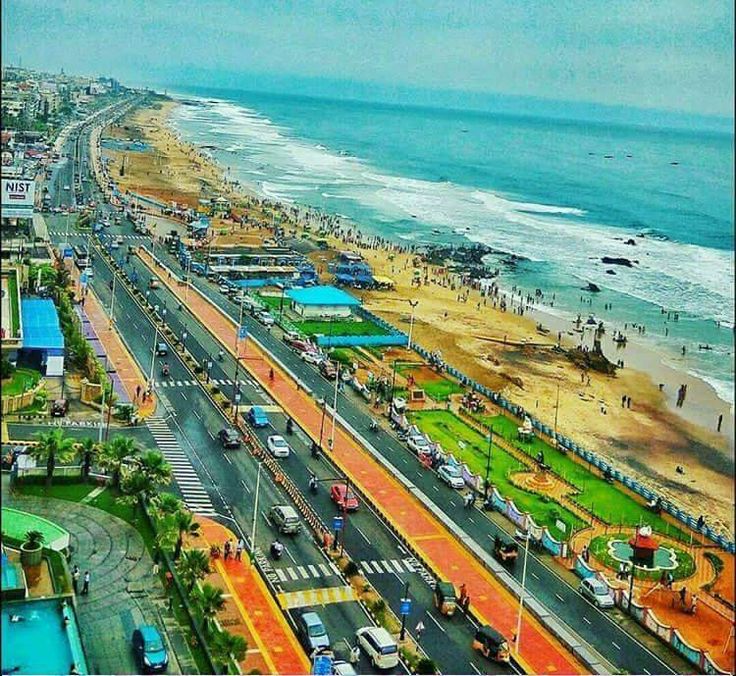
RK Beach stretches approximately three. Seven kilometers alongside the shoreline and derives its call from the nearby Ramakrishna Mission Ashram. The beach is renowned for its golden sands, mild waves, and colourful surroundings, making it a famous spot for rest and activity. Visitors can experience leisurely walks along the prom, interact in diverse seashore activities, or, in reality, unwind at the same time as looking at the captivating sunsets.
Indira Gandhi Zoological Park
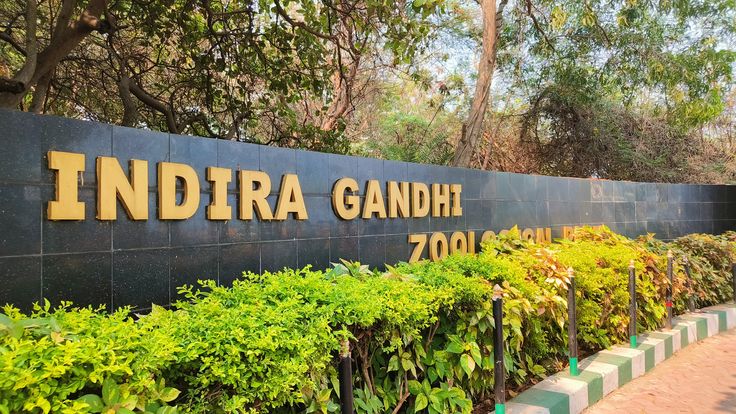
Nestled amidst the verdant Eastern Ghats and the tranquil Bay of Bengal, the Indira Gandhi Zoological Park (IGZP), known as one of the best places in Visakhapatnam is a testament to India’s dedication to natural world conservation and schooling. Established on May 19, 1977, this sprawling 625-acre sanctuary is the third-largest zoo in India and gives a unique combo of herbal beauty and diverse wildlife.
🌿 A Natural Haven
Located within the Seethakonda Reserve Forest, IGZP is enveloped by lush hills on three sides and the serene shoreline on the fourth. This strategic placement now offers a picturesque backdrop and creates a conducive environment for over 850 animals representing about 80 species, along with rare and endangered ones.
🐅 Wildlife Attractions
Visitors to IGZP can come upon a rich tapestry of fauna. The zoo houses majestic Bengal tigers, elusive Indian leopards, regal Asiatic lions, and the rare white tiger. Bird enthusiasts can enjoy sightings of rosy pelicans, gray herons, and Indian peafowls. Additionally, the zoo is home to uncommon species like giraffes, zebras, and hippos, making it a haven for flora and fauna aficionados.
Araku Valley
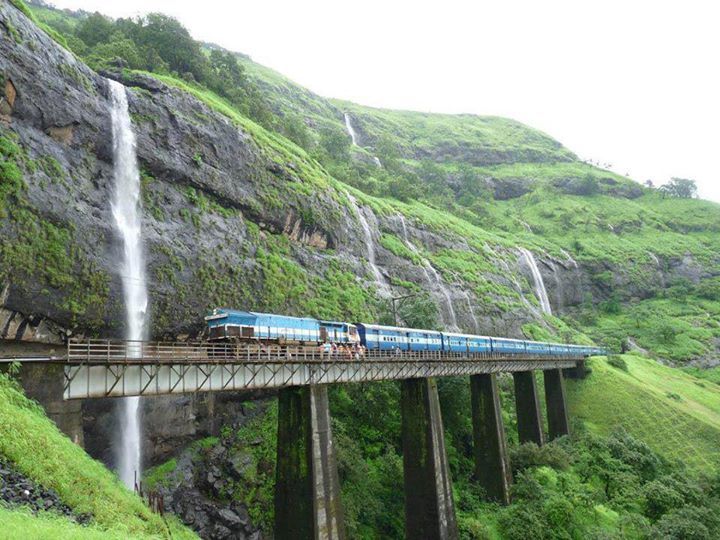
Araku Valley is approximately one hundred twenty kilometers from Visakhapatnam, perched at 3,000 feet above sea stage. This captivating hill station is surrounded by verdant forests, waterfalls, and winding roads, creating an excellent getaway for those searching for nature’s tranquility. The valley’s cool weather and serene environment make it a super destination for adventure seekers and people seeking a peaceful retreat.
Top Attractions in Araku Valley
Araku Valley is domestic to numerous points of interest that draw site visitors from throughout. Here are some of the must-go-to spots in the course of your trip:
Borra Caves:
Located approximately 35 km from Araku Valley, the Borra Caves are limestone caves that date back thousands of years. These caves are famous for their stalactites and stalagmite formations, which have created stunning natural sculptures. The surrounding region is rich in flowers and fauna, making it a spot for nature walks.
Tribal Museum:
The Tribal Museum in Araku Valley offers a glimpse into the wealthy cultural and historical past of the indigenous tribes of the region, together with the Kondhs, Gonds, and Gutti Koyas. The museum showcases tribal artifacts, equipment, apparel, and artwork, providing traffic with information on the traditions and lifestyles of the tribes.
Ananthagiri Hills:
Ananthagiri Hills is another beautiful region in the direction of Araku Valley, imparting breathtaking views of the valley. It is a famous spot for trekking, nature walks, and pictures. The cool weather and peaceful environment make it a super area for nature fanatics.
Padmapuram Gardens:
Padmapuram Gardens is a tranquil and delightful lawn with extensive vegetation. The lawn also functions as the famous hanging cottages, where traffic can stay and experience the panoramic views of the valley. It’s a perfect area for a calming walk or a picnic amidst nature.
Kailasagiri Hill Park
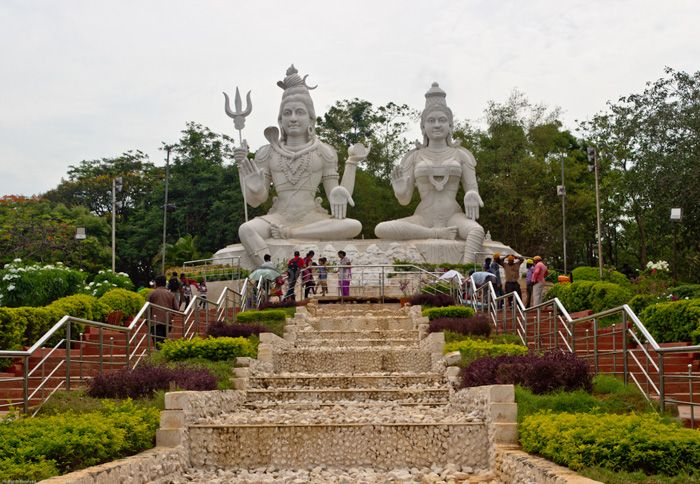
Kailasagiri Hill Park, perched at an elevation of 173 meters in Visakhapatnam, Andhra Pradesh, is a scenic hilltop vacation spot spanning 380 acres. Developed through the Visakhapatnam Metropolitan Region Development Authority (VMRDA), the park is renowned for its lush greenery, tropical vegetation, and breathtaking panoramic perspectives of the Bay of Bengal and the city skyline. Recognized as the “Best Tourist Spot” by the Andhra Pradesh government in 2003, it draws around three hundred 000 visitors yearly.
Key Attractions
Shiva-Parvati Statues: The park’s centerpiece is a 40-foot-tall white statue of Lord Shiva and Goddess Parvati, symbolizing their divine domicile, after which the park is named. A waterfall at the statue represents the River Ganges, adding religious attraction.
Ropeway Ride: A foremost spotlight, the ropeway gives a 360-degree view of places in Visakhapatnam’s coastline and hills. The 375-meter adventure, the primary of its type in Andhra Pradesh, takes site visitors from the foothill to the hilltop in below 3 minutes. Tickets fee ₹ninety for a two-way ride.
Toy Train: A 20-minute circular ride through the park, priced at ₹75 for adults and ₹30 for kids, is famous amongst families, providing scenic perspectives through obvious panels.
Floral Clock: A 10-foot-diameter clock set towards lush lawns and the Shiva-Parvati statue is a landmark that draws crowds for its creative layout.
Titanic Viewpoint: Modeled after the enduring deliver, this spot gives a unique photo possibility and panoramic vistas, especially during sundown.
Shanku Chakra Naama: A 40-meter-tall statue of Lord Vishnu’s conch and discus, developed through TTD and VUDA, provides cultural significance.
Other Activities: The park gives paragliding, horse using, jungle trails, a youngsters’s play location, and Shanti Ashram for meditation. The latest addition, sky biking, is undergoing trials to beautify the park’s journey services.
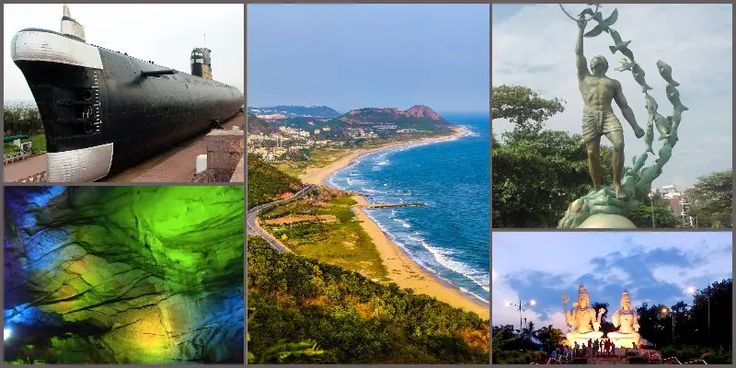
Hi, this is a comment.
To get started with moderating, editing, and deleting comments, please visit the Comments screen in the dashboard.
Commenter avatars come from Gravatar.